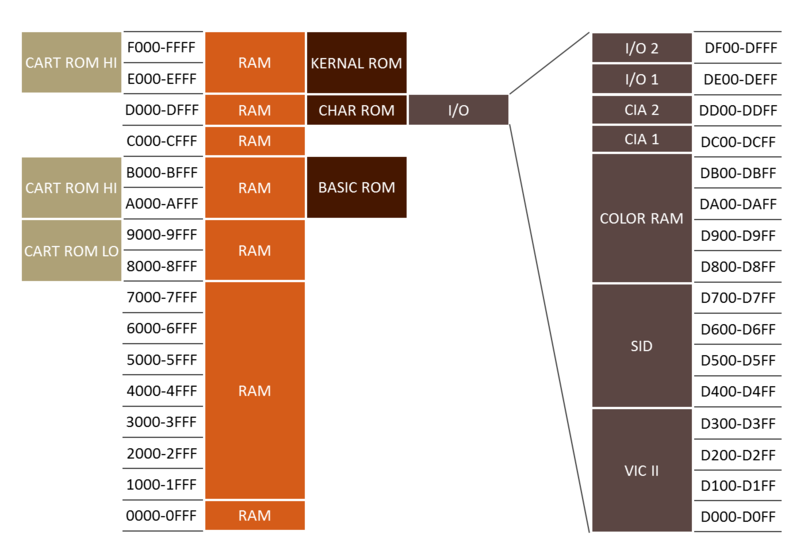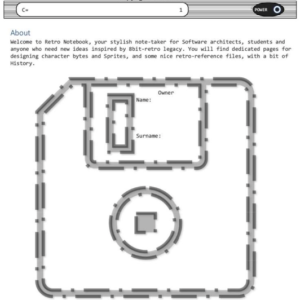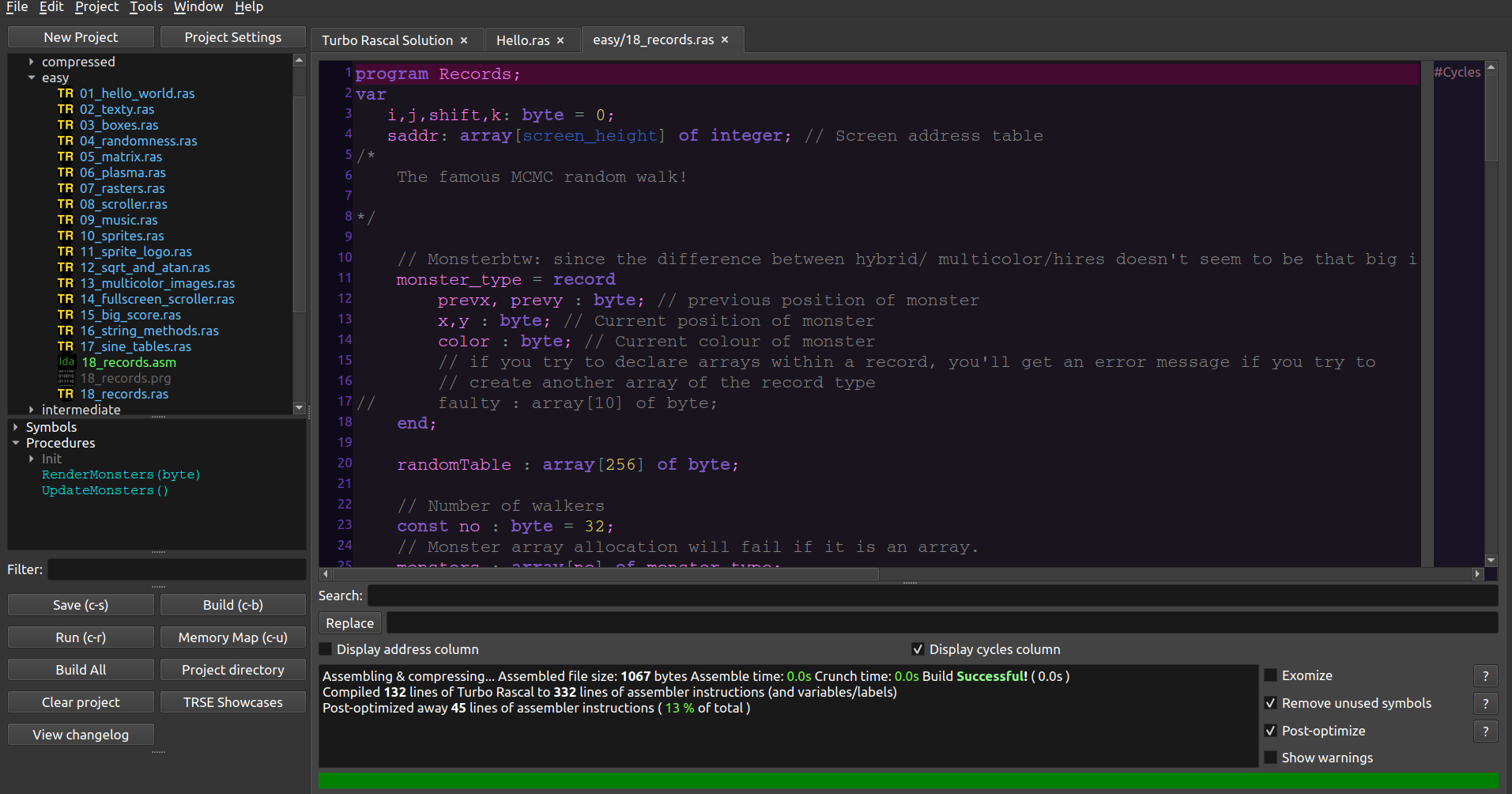-

L’Arduino Uno R3 e’ una famosa scheda basata sul chip microcontroller ATMega328P. Abbiamo parlato di Arduino gia’ innumerevoli volte, ma qui vorrei concentrarmi sulle similitudini tra l’ATMega328p e il MOS6502. Il MOS6592 nato a fine anni ‘70 e’ stato il cuore del C/64 e dell’Apple ][, oltre che di altri innumerevoli console di videogiochi (incluso il Nintendo NES).
Gia’ molti hanno osservato che il MOS6502, con la sua architettura ortogonale a 8bit e una notevole velocità di picco di esecuzioni delle istruzioni era piu’ simile ad un microcontrollore che ad un processore per (micro)computer.
Il MOS6502 inoltre indirizzava con particolare efficacia i primi 256 byte di memoria, rendondoli di fatto altri 256 registri “virtuali”, benche’ un pelino piu’ lenti.
L’ATMega328p condivide molte delle caratteristiche del MOS6502, vediamole assieme.
Innanzitutto e’ un micro controllore a 8bit, con 32 registri base indirizzabili anche a word da 16 bit. E’ estremamente performante, e quasi tutte le istruzioni tra registri vengono eseguite in 1 ciclo di clock (es addizioni, sottrazioni). Le istruzioni che coinvolgo l’accesso alla memoria vengono eseguite mediamente in 2 cicli di clock (es Store e Load), esattamente come nel 6502 che pero’ non e’ cosi’ performante sulle operazioni aritmetiche ne’ e’ in grado di fare moltiplicazioni o divisioni.
Read More -
Le tastiere moderne sono piene di microchip, e tipicamente offrono una interfaccia seriale per comunicare la vostro PC i tasti premuti. Negli allegri anni ottanta non era per niente cosi'.
Le tastiere del Vic20 e del C/64 erano interruttori (switch) completamente prive di intelligenza. Per esempio nel C/64-C/128 il tasto RESTORE, se premuto, attivava direttamente l’interrupt non mascherabile NMI, e quindi funziona anche se il vostro programmino BASIC fosse in un un loop infinito. Ma procediamo con ordine
Read More -
Oggi parleremo della mappa di memoria del C/64. Dovete sapere che programmare il C/64 era complicato per diverse ragioni:
- Il Basic V2 era troppo lento per scrivere giochi effettivi
- La maggior parte delle feature richiedevano di scrivere direttamente su celle di memoria mappate sui chip audio e video, spesso cambiando singoli bit.
- La mappa di memoria del C/64 era abbastanza complessa, soprattutto se confrontata con molti altri computer del medesimo periodo.

Read More -
Negli anni'80, il MOS 6502 fu uno dei chip di maggior successo: era alla base dei Computer Commodore ma anche dell’Apple II e dell’Atari 2600. Un latro protagonista di quell’era fu lo Z80, inventato da Federico Faggin e compatibile a livello binario con l'8080, ma con molte piu’ feature.
Read More -
On these days I stumbled upon Forth, a 1970 programming language which is quite similar to HP48 internal programming language.
Like the HP48 language, Forth uses RPN, it is stack based and have some success for being tiny and easy to implement.
For a 6502 Forth compiler you can refer to https://github.com/piotr-wiszowaty/foco65
Read More -
I chip con set di istruzione complesso sono chiamati “CICS”, mentre quelli con un set “ridotto” sono chiamati RISC. Storicamente i CICS hanno invaso il mercato prima, in modo un po’ controintuitivo.
Tipicamente l'8086 e’ considerato un sistema CICS, e vedremo perche'.
Tutto parte da mamma IBM.
Read More -
 Do you STILL love taking notes by hand? I have created different types of composition notebook, even retro-style one, inspired by MOS6502, with Sprite Editor sheets, and some nice goodies. Give them a try!
Do you STILL love taking notes by hand? I have created different types of composition notebook, even retro-style one, inspired by MOS6502, with Sprite Editor sheets, and some nice goodies. Give them a try!
Read More -

Do you STILL love taking notes by hand? I have created different types of composition notebook, even retro-style one, inspired by MOS6502, with Sprite Editor sheets, and some nice goodies. Give them a try!
Below a selection of screenshot from my composition notebook, called The Retro Notebook: you can click on the image below to get a larger one.
Read More -
Due to COVID19 pandemic, I and my family was forced in our home. So I revamped my 8bit computer book, with a new look and a nice search engine.
-

Turbo Rascal is a development environment for the Commodore computers but also for others like NES and so on.
It is a bit different from other IDE because it is based on a Pascal-like language. It is not easy to compile high level programming language on 6502, but Pascal seems to pay its bill well.
Read More -
I am happy to announce pyc64 now supports save and load programs on top of real emulation. Irmen point me to the right code to look, and I implemented the fix in the weekend; happy hacking!
-

I’d like to point you to this blog article about “cycle stepped” 6502 emulator. It is well described and can be a neat read for xmas vacation.
Also author’s main project is all about
A toolbox of 8-bit chip-emulators, helper code and complete embeddable system emulators in dependency-free C headers (a subset of C99 that compiles on gcc, clang and cl.exe).
which can inspire you new project to integrate!Do not forget to take a look also at my 8bit free book.
Read More -
8 Bit computers: from 1977 to 1985
Jun 27, 2019 · 1 min read · -
Coming soon 8 Bit computers: from 1977 to 1985
May 21, 2019 · 2 min read ·Hi all!
 I decided to write a book called “8-Bit Computers: Retro computer history in the ‘80”.
It is my first book on this topic, so I need you comments & advices!
A small extract is right here for download.
I decided to write a book called “8-Bit Computers: Retro computer history in the ‘80”.
It is my first book on this topic, so I need you comments & advices!
A small extract is right here for download.You will be able to buy the Kindle edition for little as € 0,99 by the end of June.
Read More -
When I was young I was able to play with my Vic20/Commodore64. I learned to love programming with these small 8-bit real computers. I was between 11 and 12 years old, and just learning basic English, with only a data-casette to store my stuff.
Now my son is 9 years old, and I was unable to find something like the Commodore computers to teach it.
Read More
